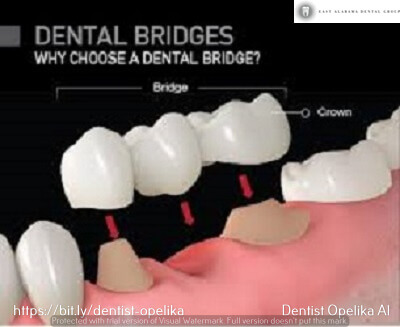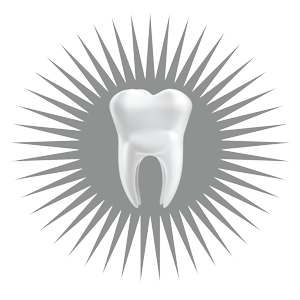
Dental Bridges Opelika AL
Dental bridges are a great way to fill in the gaps left by missing teeth. Bridges rely on the support of the surrounding teeth. The type of bridge you choose will depend on your individual needs and preferences. They are usually quite strong and can last for many years with proper care.
What are dental bridges?
It is a type of dental restoration used to replace one or more missing teeth. A dental bridge is made up of two dental crowns (one for each tooth adjacent to the gap) with a false tooth/teeth in between. The dental crowns are placed on the natural teeth (abutment teeth) on either side of the gap and are used to support the false tooth/teeth (pontic).
Why dental bridges?
Bridges are used to:
- Restore the function of your teeth – chewing and speaking
- Maintain the shape of your face
- Prevent your remaining teeth from changing position
What are the types of bridges?
The three most common types of dental bridges used today are:
- Traditional dental bridge (also known as a fixed partial denture). This is the most common type of dental bridge. It consists of a pontic (false tooth/teeth) that is fused between two dental crowns. The dental crowns are placed on the abutment teeth (natural teeth) on either side of the gap.
- Cantilever dental bridge. This type of dental bridge is used when there are abutment teeth only on one side of the gap. It consists of a pontic (false tooth/teeth) that is cantilevered (supported) by one dental crown. The dental crown is placed on the abutment tooth (natural tooth) on the side of the gap.
- Resin-bonded dental bridge (also known as a Maryland bridge). This type of dental bridge consists of a pontic (false tooth/teeth) that is bonded to the back of dental wings. The dental wings are placed on the abutment teeth (natural teeth) on either side of the gap.
What is the procedure like?
The first step is to schedule a consultation with your dentist to see if a bridge is right for you. If so, your dentist will take x-rays and impressions of your teeth. These will be used to create a model of your mouth.
Next, your dentist will prepare the abutment teeth (natural teeth) by removing some of the enamel. This is done to make room for dental crowns.
Once the abutment teeth are prepared, dental crowns will be placed on them.
Finally, the pontic (false tooth/teeth) will be placed on the dental crowns.
The dentist will then make any final adjustments and ensure that you are happy with the fit and appearance of your dental bridge.
Are dental bridges right for me?
They are a great option for many people who are missing one or more teeth. However, they may not be right for everyone. Some factors that will be considered when determining if dental bridges are right for you include:
- Number of teeth you are missing
- Location of the missing teeth
- Condition of the abutment teeth
- Your bite
- Your dental insurance coverage
If you are missing one or more teeth and would like to discuss dental bridges with a dentist, schedule a consultation today. At East Alabama Dental Group we love to help people who need dental bridges in Opelika, AL.
Bridges can give you back your smile and help you regain the function of your teeth. Call us today!

